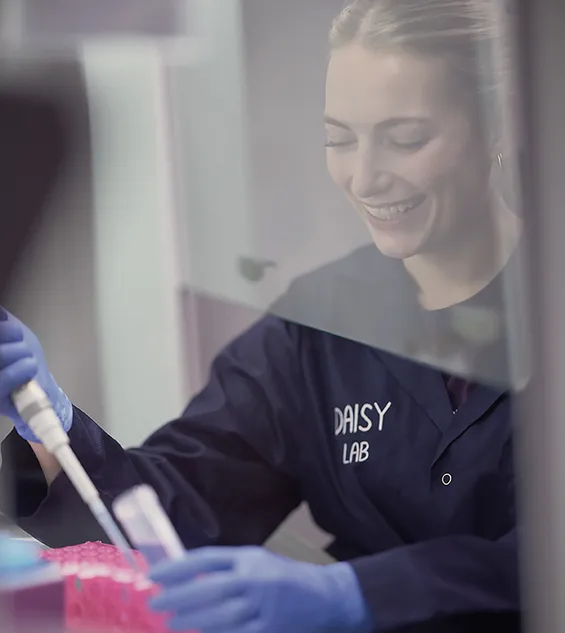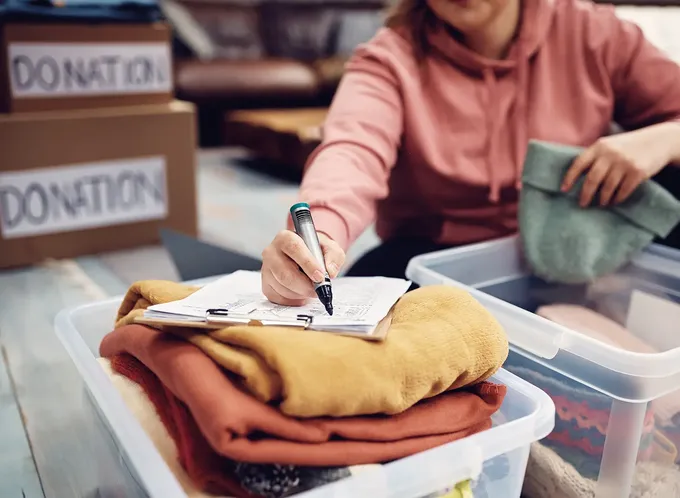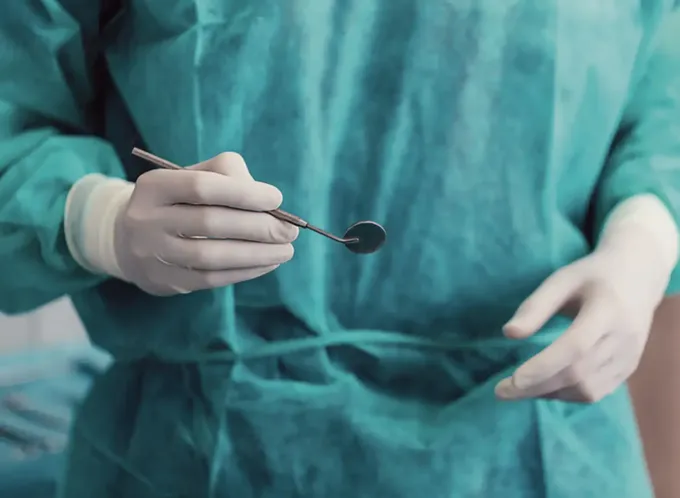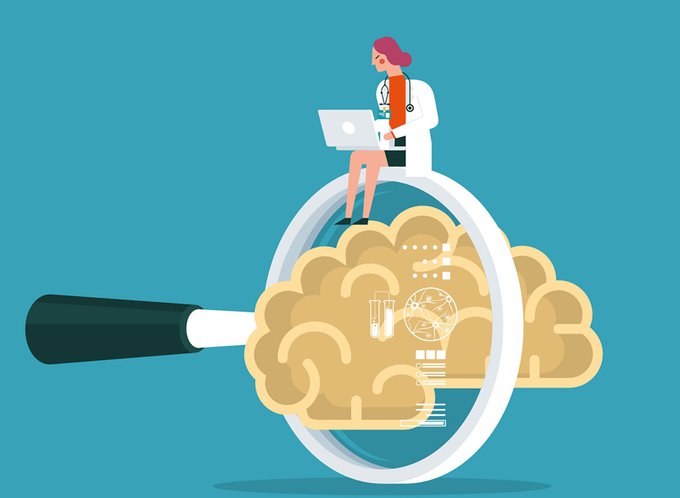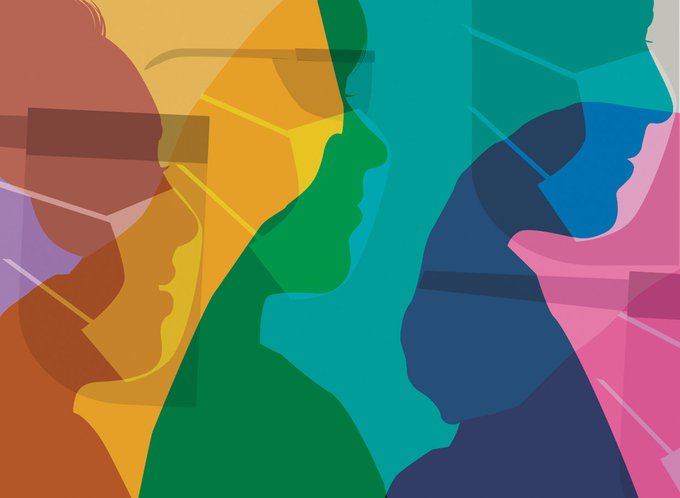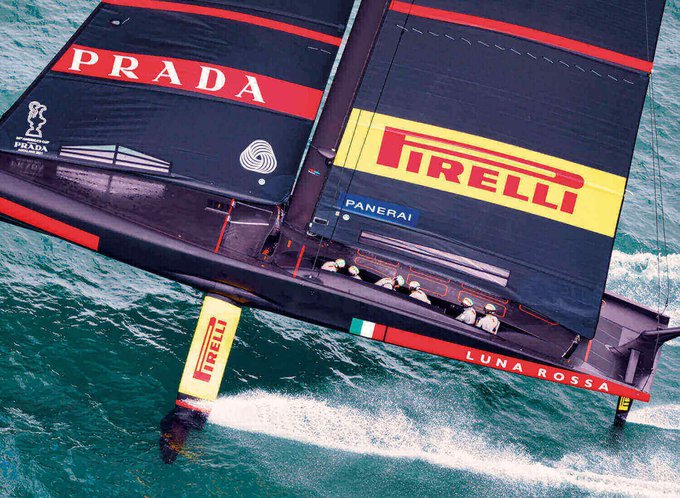How our food is changing for the future
With climate change woes and a booming global population to feed, experts say we should be rethinking the way we eat. And fake meat is just the start of what could be on our plates by 2050.
From meatless ‘mince’ to vegan ‘bacon’, beast-free fare has exploded in popularity over the past decade. Faux meat is taking up increasing amounts of shelf space at the supermarket, fast-food chains are peddling plant-based options and as non-meat meals go increasingly mainstream, even the most carnivorous among us are giving tofu a try.
But when it comes to the frontier of food tech, bovine-free burger patties are just the beginning.
In research centres across the western world, scientists are looking into lab-grown meat and edible insects as future fare. Right here in New Zealand, work is under way to make protein from synthesised DNA, and researchers are investigating whether the seaweed from our coastlines could one day be on the menu.
Global gluttons and greenhouse gases
Over the next 20 years, experts say we’re headed for a fundamental shift in the way we think about food. Factors driving the change include ballooning population growth, our hunger for protein and the environmental toll of keeping everyone fed.
According to the United Nations, the current global population of 8 billion is set to reach almost 10 billion by 2050. As commercial animal farming emerges as one of the world’s biggest producers of greenhouse gases, feeding millions more mouths with current systems of food production will be problematic for the planet, especially as we grapple to keep global warming below 1.5C.
While non-animal or ‘alternative’ proteins are catching on with consumers, traditional meat and dairy still reign supreme in developed countries. The World Economic Forum says we collectively ate our way through 754 million metric tonnes of meat, fish, dairy and eggs in 2020 (nearly 75 kg per person), and that amount is steadily growing.
And as more populations move into the middle class and consume more meat and dairy products, keeping up with demand will put the world’s resources, like land and water for agriculture, under increasing pressure.
Closer to home, Aotearoa New Zealand is not immune to the growing issues linked to the way we eat. According to the Ministry for Primary Industries, dairy and meat account for a hefty 64% of the country’s export sales, and the Ministry for the Environment reports nearly half of New Zealand’s greenhouse gas emissions come from agriculture – mainly in the form of methane and nitrous oxide produced by cows.
But it’s not all doom and gloom. From cow-free milk protein to health-boosting seaweed, OnMAS spoke to two New Zealand-based experts who are shaping the future of our food.
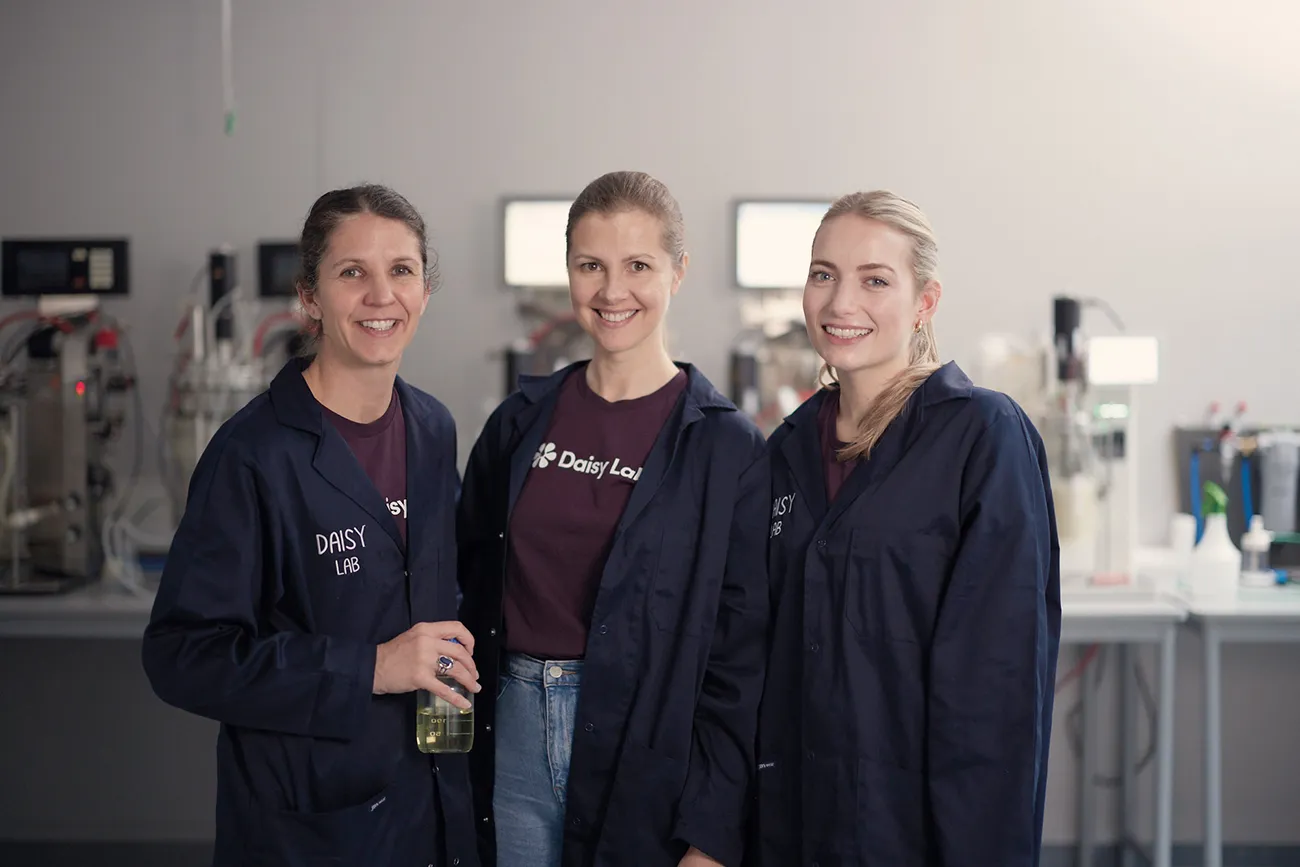
Daisy Lab co-founders Dr Nikki Freed, Irina Miller and Emily McIsaac are taking a new approach to dairy.
Milk, but not as we know it
At Auckland’s Daisy Lab, co-founders Irina Miller, Dr Nikki Freed and Emily McIsaac are taking a new approach to dairy. They’re removing the cow from the equation completely and using microbes to help produce more environmentally friendly milk products.
“The maths doesn’t stack up any more for traditional dairy,” says Daisy Lab CEO Irina Miller. “It’s a big dilemma globally and also locally – the demand for dairy and dairy proteins is strong but we can’t keep increasing stock levels. It’s just killing the environment. This led us to think could we make dairy another way?
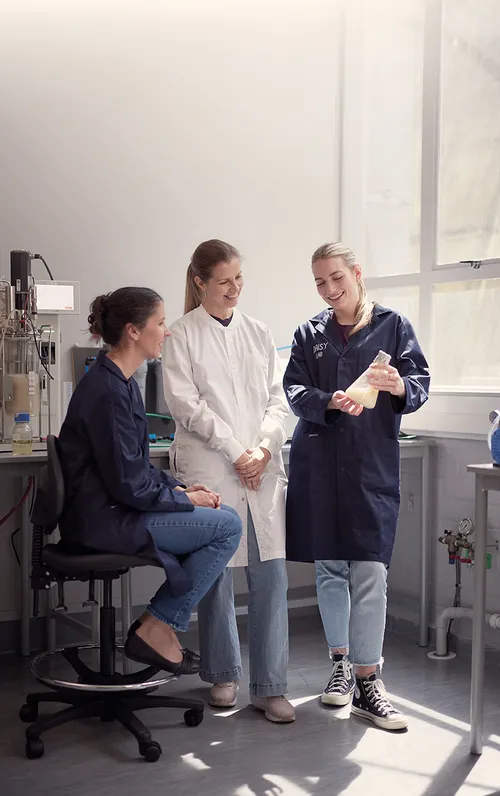
Starting with a tiny piece of synthesised DNA, Daisy Lab uses precision fermentation to create milk proteins that are identical to the bovine originals. Once the finished product is complete, the proteins can be used as an ingredient in products like ice creams and coconut yoghurt and to boost the nutrient content of plant milks.
And that’s just the start. As New Zealand only exports a small amount of liquid milk, lab-created protein powders could be a major disruptor to the dairy industry. Overseas, biotech boffins say precision fermentation’s potential could be huge once processes are perfected, and Daisy Lab is already right at the forefront.
Precision fermentation works by taking friendly microorganisms and giving them sugary water for food and the right conditions to grow. The sequence of DNA that is introduced into the microbe (in this case cow DNA) dictates the sort of protein the microbes will go on to produce.
“It’s like giving the microbes an extra set of instructions,” Irina says. “Sometimes, they aren’t interested and it doesn’t work. Other times, the process takes and the microbes start gobbling up the sugars and multiplying while replicating the protein. Once you start producing higher volumes, the process happens in stainless steel fermenters, quite similar to what you see in a craft brewery.”
In its simplest form, fermentation has been used in food production for centuries as an essential element of winemaking and beer brewing. Since the 80s, precision fermentation has been used to make vitamins, insulin, cheese rennet and a range of other products. These days, the process is even more high tech and targeted, with scientists exploring options for lab-made meat, proteins and flavours.
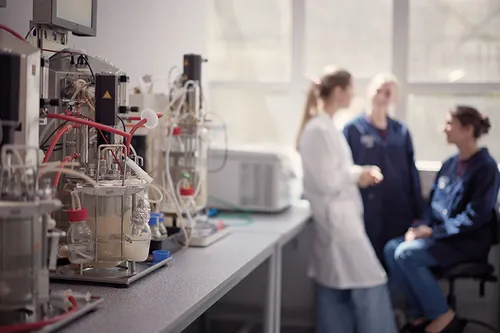
Without the need for cows in a field, precision fermentation ticks the boxes environmentally, using much less land, water and energy compared to traditional farming. It also produces far less waste and greenhouse gases. On the other hand, there are still questions around how to produce lab-grown food products at scale, how to make them cost-effective and whether consumers will have an appetite for cell-cultivated kai.
But back at Daisy Lab, the innovation is turning heads. Since it's beginning in 2021, the start-up has scooped a range of big-name funding, including a Callaghan Innovation grant.
Does it have the power to change how we eat in the future? “I truly think it does, but clearly I’m biased,” says Irina. “There are a lot of opinions on this technology ranging from it will always be really small and fringe to it’s going to take over the industry. I’m not sure it will replace all dairy, but I think it could really change the landscape. It’s an exciting space to be working in.”
Microalgae, massive potential
Would you sprinkle odourless seaweed powder onto your cereal, or eat a burger patty made with algae? Nutrient-packed seaweed could be one of Aotearoa’s biggest untapped food sources but getting foodies on board with algae could be one of the biggest challenges, says Cawthron Institute’s Dr Johan Svenson.
“Many of us are from backgrounds with no cultural tradition of eating seaweed, so it does require a change in thinking. We’ve jokingly talked about making green algae McNuggets for McDonald's – that would be awesome. But that’s another issue – the colour green can be a turn-off for some so there’s quite a bit of work going into creating white and colourless powders.”
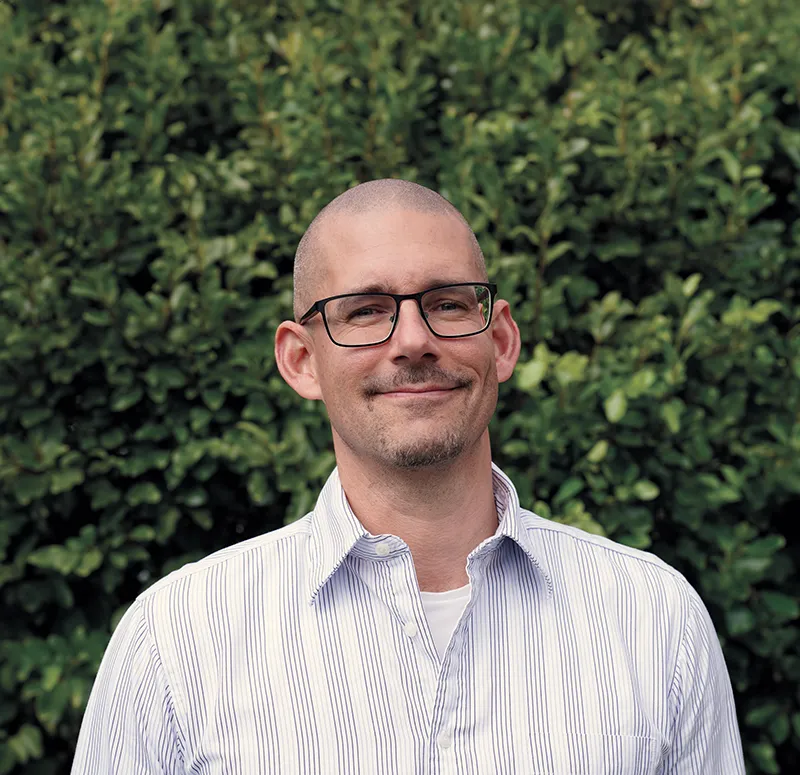
Dr Johan Svenson from the Cawthron Institute believes microalgae could shake up the future food scene.

Cawthron researcher Dr Tom Wheeler with a sample of karengo, a high protein seaweed found throughout Aotearoa's coastline.
As Science Impact Manager at Cawthron, Johan is part of a team that works with a carefully curated collection of more than 700 strains of microalgae. Alongside biotech start-up NewFish and Nelson-based engineering firm Kernohan, about 100 of them are currently being screened for nutritional properties, and some of these could potentially end up on our plates.
But why algae? It’s the combination of abundance, nutrient density and environmental creds that have experts interested. From larger varieties of seaweed farmed in the ocean to tiny microalgae cultivated in tanks in the lab, it doesn’t compete with other crops for arable land and requires a relatively simple drying process to turn into the final product.
Of course, snacking on seaweed is nothing new in many Asian countries. “In South Korea for example, the average person eats about 25 kilos of seaweed each year.”
As a commercial proposition, competing with big overseas markets like Asia would be challenging from a cost perspective. But researchers say Kiwi algae products could potentially be as premium overseas as mānuka honey or green-lipped mussels.
“One we’re doing a lot of research on is karengo or New Zealand nori. It’s from a group of red seaweeds that we have around most of the coastline. It’s really high in protein and low in iodine, so that’s one we are particularly interested in from a food perspective.”
For now, the science on edible algae is still in the early stages. But as an island nation, we have a whole ocean to explore.
“In New Zealand, we’re 4% land and 96% ocean, so we have tremendous resources,” says Johan. “There are more than 1,000 different seaweed species in our oceans that we know very little about, and to me, this is a significant part of the future. I like the idea of growing algae that people want to eat produced with as little processing as possible. I think it will have a big impact.”
Outside the squareAlternative protein, also known as sustainable, complementary or ‘alt’ protein, is an umbrella term for protein-rich food products made from plants and microorganisms. Ingredients include nuts, grains, mushrooms, pulses (like chickpeas and lentils) and legumes, which include green peas and soybeans. Alt proteins also extend to algae and seaweed, edible insects like crickets and cultured (lab-grown) meats and compounds. |
Know someone who might enjoy this?
Read this next
-
August 2023
Ringa raupā supporting their communities
-
November 2023
Taking on the world in taekwon-do
-
November 2023
News in brief
-
November 2023
When MAS was there for me
Professional life
See all-
March 2021
Made for today a century ago
-
March 2021
The great brain gain
-
March 2021
A hectic, horrific working holiday
-
March 2021
Smooth sailing for Southern Spars
